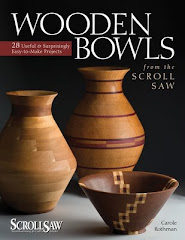Needing a way to hold small pieces safely at my drill press, I bought a Harbor Freight special, which is essentially a vise grip. It worked, but was a nuisance to use.
When I received an email from Peachtree featuring this Kreg drill press clamp, and watched the video, I couldn't resist. There were, however, a few glitches.
The video failed to mention that the bolt from the adapter that goes into the clamp needed to be firmly seated or it can bend. It also didn't mention that although the clamp self-adjusts to different thicknesses of wood, there is an adjusting screw to set the amount of pressure that will be applied.
Needless to say, I didn't have the bolt fully in, and applied much too much pressure. Fortunately, after I sent them a picture of the bent bolt and explained what happened, they sent me a new one.
It's quite impressive what a difference the clamp makes compared to holding the piece by hand, and since any tool that rotates has the potential to hurl something in your face or across the room, I feel much more comfortable using it.
































